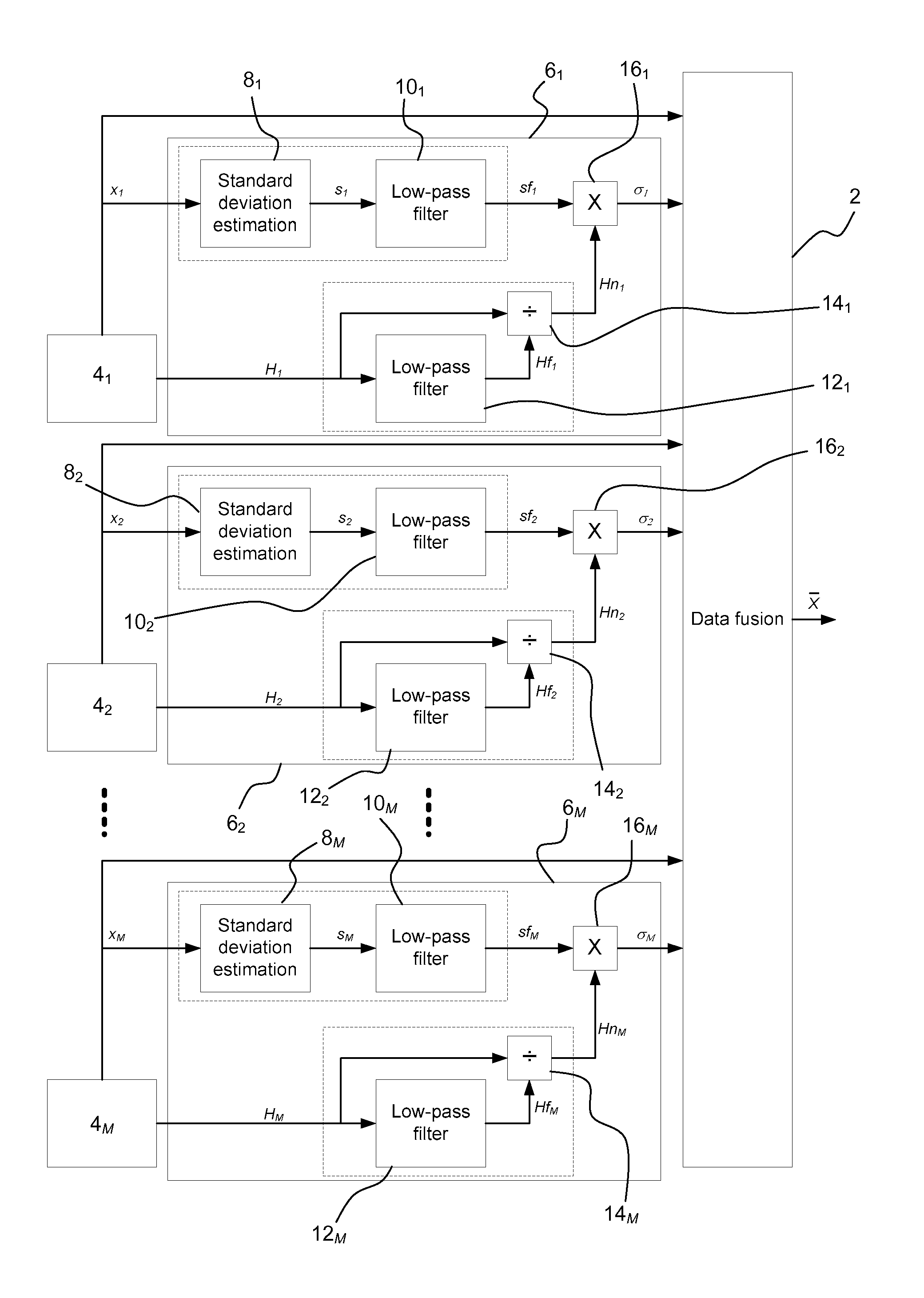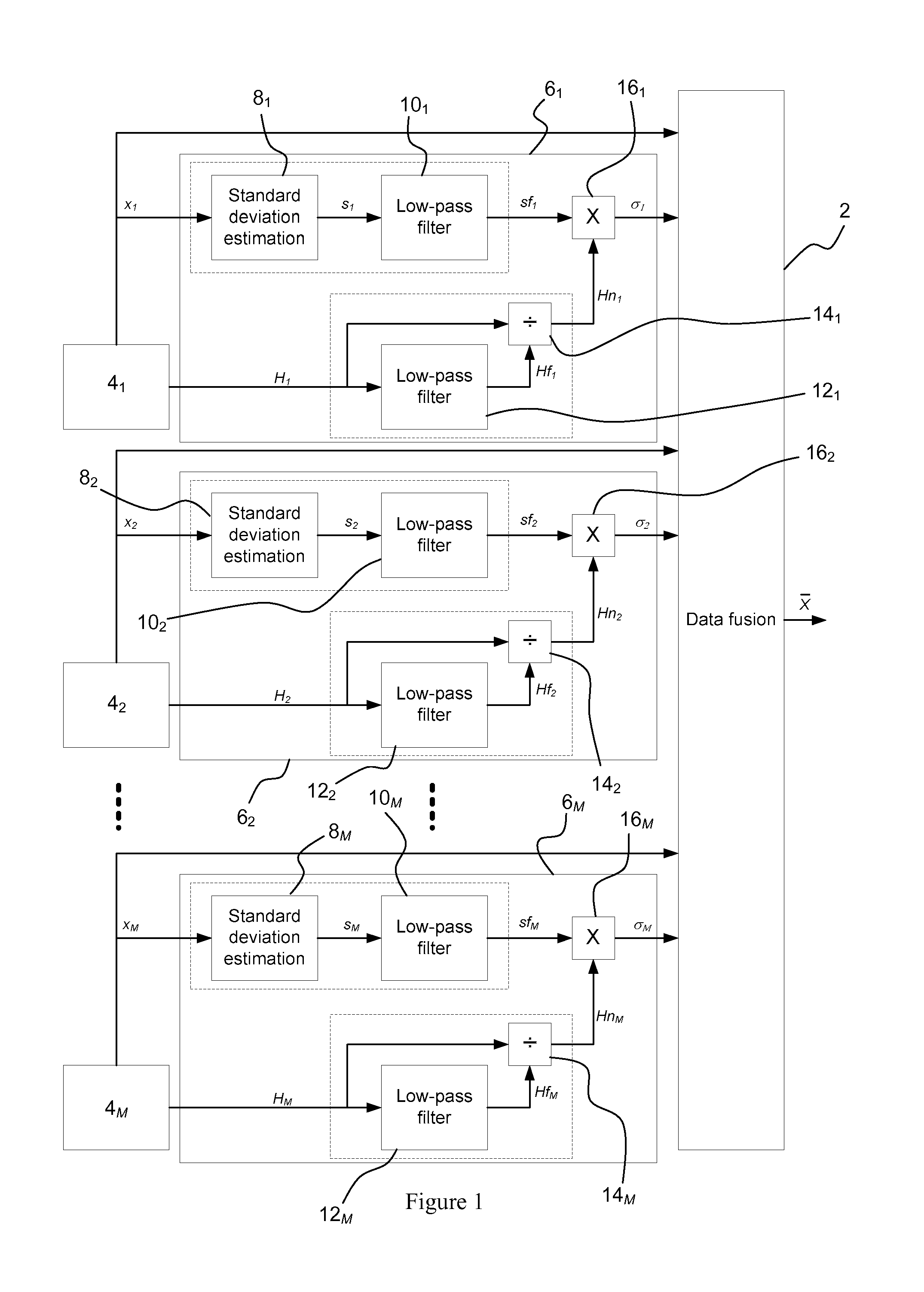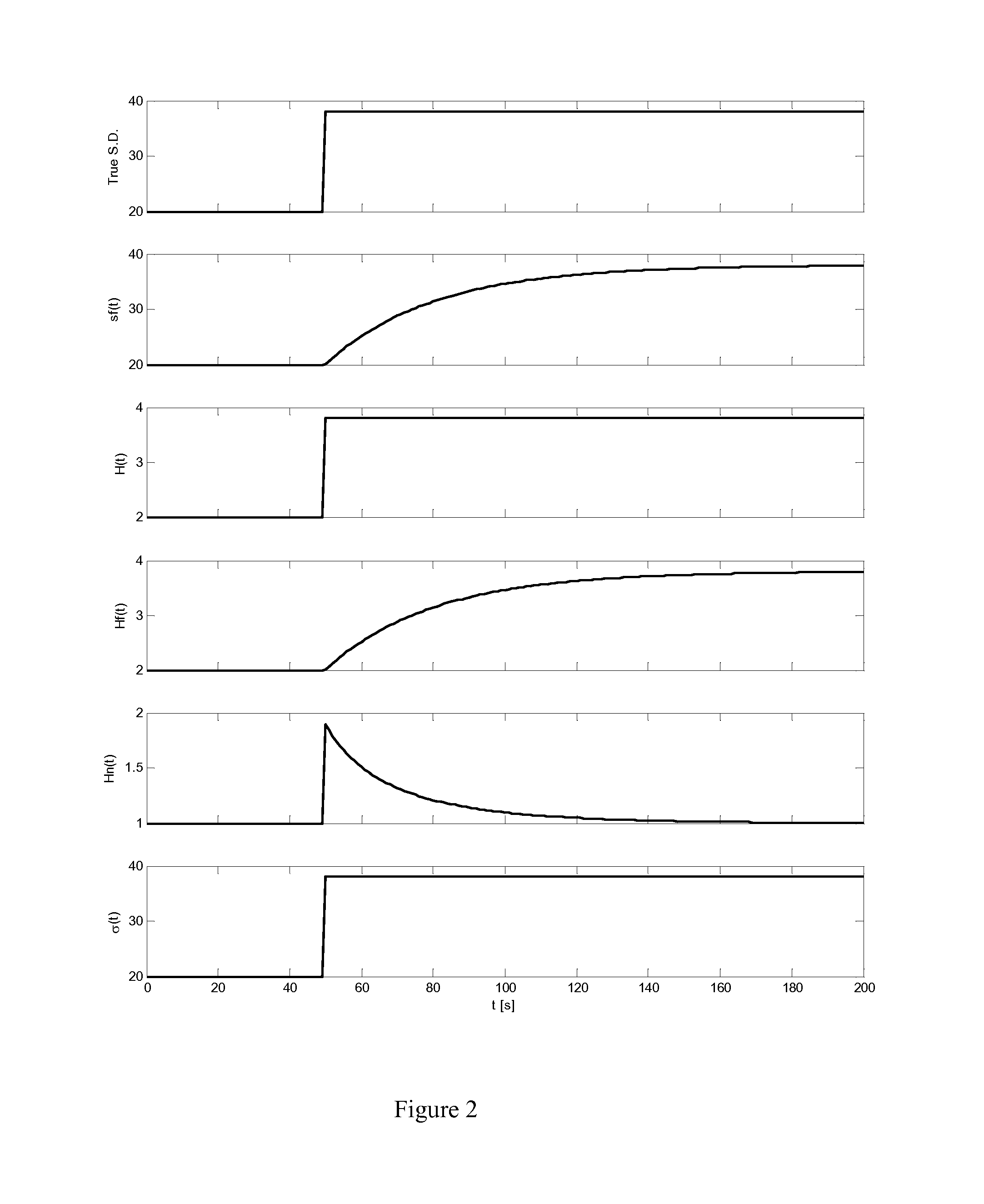Data fusion architecture
a data fusion and data technology, applied in the direction of steering initiation, instruments, transmission, etc., can solve the problems of loss of position beyond the acceptable limits, affecting the safety of personnel or equipment, or the environment, and the accuracy of the measurement data provided by a particular pme may not always be constant, so as to achieve the effect of reducing the accuracy of the measuremen
- Summary
- Abstract
- Description
- Claims
- Application Information
AI Technical Summary
Benefits of technology
Problems solved by technology
Method used
Image
Examples
Embodiment Construction
[0047]An improved architecture for a dynamic positioning (DP) system for a marine vessel will now be explained with reference to FIG. 1.
[0048]A DP system includes a Kalman filter 2 (labelled ‘Data fusion’) to combine position measurements to derive an estimate of the position and heading of the marine vessel. The output X of the Kalman filter 2 is supplied to a vessel control unit (not shown) that outputs a signal to thrusters to cause them to bring the position of the vessel closer to a desired reference position.
[0049]The position measurements are supplied by a plurality of sensors 41, 42 . . . 4M (where M≧2) or position measuring equipment (PME) located on the marine vessel. The sensors 41, 42 . . . 4M can be of the same or of different types including inter alia hydro-acoustic positioning systems providing long baseline (LBL) position measurements and / or ultra-short baseline (USBL) position measurements, satellite navigation systems providing GPS or differential GPS (DGPS) posit...
PUM
 Login to View More
Login to View More Abstract
Description
Claims
Application Information
 Login to View More
Login to View More - R&D
- Intellectual Property
- Life Sciences
- Materials
- Tech Scout
- Unparalleled Data Quality
- Higher Quality Content
- 60% Fewer Hallucinations
Browse by: Latest US Patents, China's latest patents, Technical Efficacy Thesaurus, Application Domain, Technology Topic, Popular Technical Reports.
© 2025 PatSnap. All rights reserved.Legal|Privacy policy|Modern Slavery Act Transparency Statement|Sitemap|About US| Contact US: help@patsnap.com



